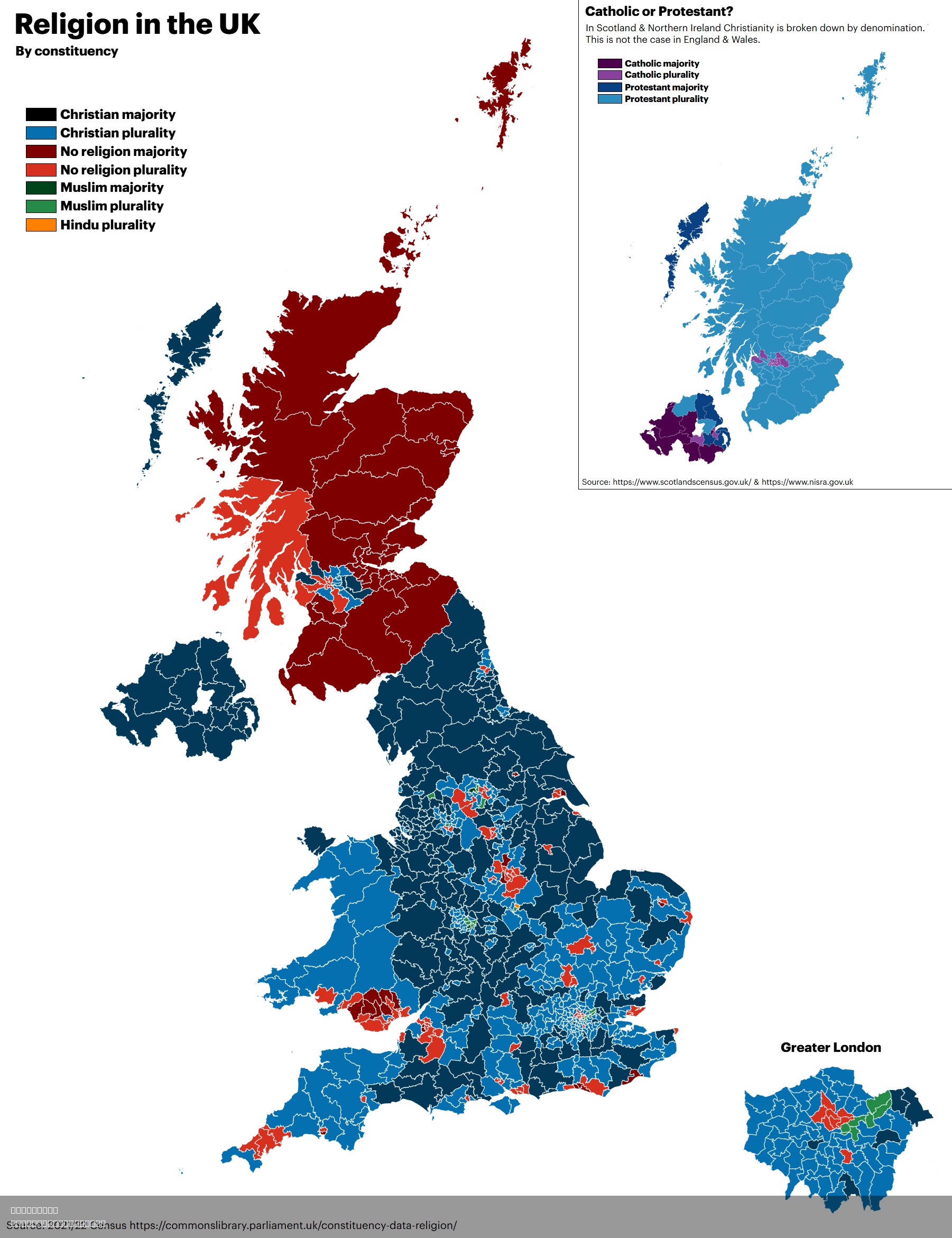Religion in the UK Map


David Chen
Data Visualization Specialist
David Chen is an expert in transforming complex geographic datasets into compelling visual narratives. He combines his background in computer science ...
Geographic Analysis
What This Map Shows
The "Religion in the UK Map" provides a visualization of the diverse religious affiliations present across the United Kingdom. It highlights the distribution and density of different faiths, including Christianity, Islam, Hinduism, Sikhism, Buddhism, and those identifying as non-religious. This data is often derived from national censuses and surveys, reflecting the changing religious landscape in the UK over recent decades. With such a rich tapestry of beliefs, the map serves as a crucial tool for understanding the role religion plays in society today.
Deep Dive into Religion in the UK
Religion has long been a cornerstone of British culture, influencing everything from laws to festivals, and even everyday social interactions. Christianity, particularly in its various denominations such as Anglicanism, Catholicism, and Methodism, has historically dominated the religious landscape. However, the dynamics are shifting. According to the latest census data, as of 2021, around 46% of the UK population identified as Christian, a significant decrease from previous decades. Interestingly, this decline is paralleled by a rise in individuals identifying as having no religion, which now accounts for approximately 37% of the population.
Islam is the second-largest religion in the UK, with about 3.9 million followers, representing 6.5% of the population. The concentration of Muslims is notably higher in urban areas, particularly in London, where the borough of Tower Hamlets has one of the largest Muslim populations in the country. Other faiths, such as Hinduism and Sikhism, also have substantial communities, primarily situated in major cities like Leicester and Birmingham.
The increase in religious diversity is partly due to immigration patterns, with many individuals from South Asia, the Middle East, and Africa settling in the UK. Additionally, the map indicates a notable concentration of Buddhism, primarily among the Asian communities, particularly in cities with larger ethnic populations.
Interestingly, the demographic shift is not just a reflection of immigration but also a shift in cultural attitudes. The younger generation tends to be more secular, which is evident in the rising number of individuals identifying as non-religious. This transition raises important questions about the future of religious institutions in the UK and their role in society.
Regional Analysis
When examining the map closely, we can see distinct regional variations in religious affiliation. England, particularly London, is more religiously diverse than Wales, Scotland, and Northern Ireland. In London, the presence of multiple faith communities is evident; areas such as Newham and Brent have significant Muslim populations, while places like Harrow are known for their Hindu communities.
In contrast, Wales is predominantly Christian, with a strong focus on traditional practices, and a smaller percentage of non-religious individuals compared to England. Scotland reflects a similar trend, but with a notable rise in those identifying as having no religion, particularly in urban areas like Glasgow and Edinburgh. Northern Ireland presents a unique case, where religious affiliation often aligns closely with political identity, predominantly between Protestant and Catholic communities.
For instance, the city of Derry has a predominantly Catholic population, while areas like Belfast display a mix but still show significant Protestant majorities in specific neighborhoods. This division highlights the complex interplay of religion and politics in Northern Ireland, making it a unique case within the UK.
Significance and Impact
Understanding the religious landscape of the UK is essential for several reasons. Firstly, it illuminates the cultural identities that shape communities, influencing everything from social policies to community relations. Recognizing the diversity of beliefs can foster inclusivity and tolerance in an increasingly pluralistic society.
Moreover, as the number of non-religious individuals rises, there are implications for religious organizations, which may need to adapt to remain relevant in contemporary society. This shift also affects public policy, education, and even healthcare, as providers may need to cater to a more diverse population with varying beliefs and practices.
Looking ahead, projections indicate that the trend towards secularism will continue, reshaping the religious landscape further. This evolution presents opportunities for interfaith dialogue and community building, as different groups seek common ground in an ever-changing society. Have you noticed how discussions around faith are becoming more common in social and political arenas? The future of religion in the UK is not just about numbers; it's about the lived experiences and interactions of individuals and communities.
In conclusion, the "Religion in the UK Map" encapsulates a vital aspect of British life, revealing not just where people worship, but how they connect, identify, and interact with one another within a complex and evolving social fabric.
Visualization Details
- Published
- August 3, 2025
- Views
- 120
Comments
Loading comments...